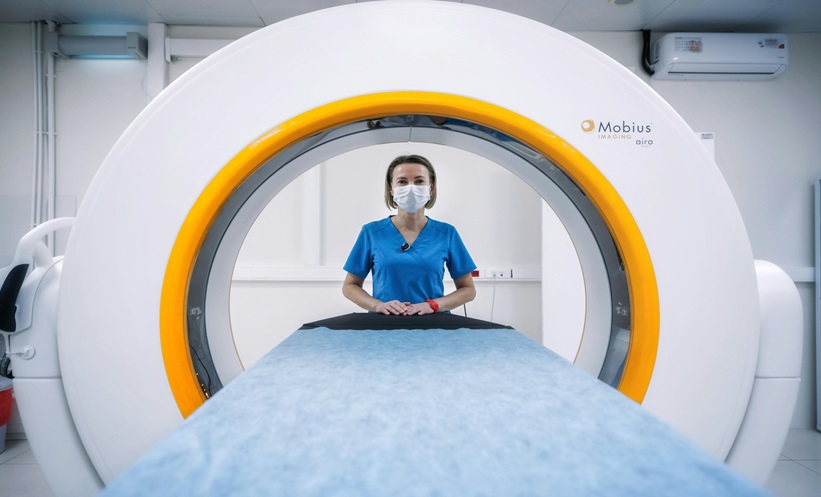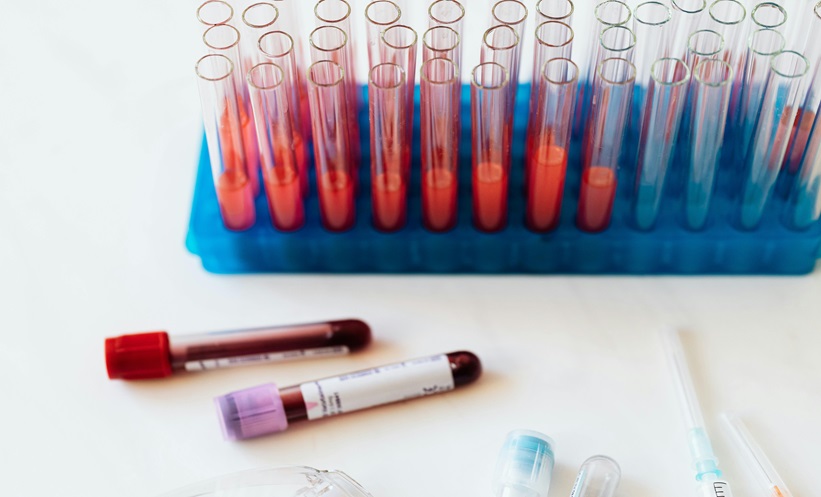Abstract
Traumatic brain injury (TBI) is a major public health concern in Canada, with falls, blows to the head, car accidents, and sports-related injuries being the leading causes. Post-traumatic movement disorders, such as tics, can occur after a TBI, but their association with mild TBIs has been less explored. This manuscript presents two pediatric cases of de novo tics following mild TBIs, shedding light on this unique phenomenon. Possible mechanisms linking mild TBI and tics, such as genetic predisposition and stress-induced activation of the hypothalamic-pituitary-adrenal axis, are discussed. This paper emphasizes the importance of recognizing tics as a potential consequence of mild TBIs in children, and underscores the need for further research to shed light on the mechanism involved.
Key Points
1. This case report highlights the rare occurrence of de novo tics following mild traumatic brain injury in children, emphasizing the need for clinical awareness, and for differentiation from other movement disorders, which are often misdiagnosed as tics.
2. The manuscript delves into potential mechanisms, such as genetic predisposition and stress-induced hypothalamic-pituitary-adrenal axis activation, illustrating how these factors may contribute to the development of tics after mild traumatic brain injuries.
3. Key takeaways include the importance of considering tics as a potential outcome when evaluating children after concussions, and the need for additional research to develop more effective treatment strategies for these patients.
INTRODUCTION
Traumatic brain injury (TBI) is a significant public health concern in Canada, with falls, blows to the head, car accidents, and sports-related injuries being the most common causes.1 TBIs are categorized by severity ranging from mild to severe, based on the presence and intensity of loss of consciousness, cognitive impairment, memory loss, and brain damage.2 Following a TBI, some patients may experience involuntary movements, which can be attributed to various factors, such as immediate injury to the basal ganglia and its connections, delayed consequences of hemosiderin deposits, and abnormal neuroplasticity.3 While tremors, dystonia, chorea, and tics are well known to occur after a severe TBI, tics have been reported in less than 1% of cases.3,4 Post-traumatic tics can either start early, within a few weeks, or late, after several months following TBI.4 The article describes two unique pediatric cases of de novo tics following mild TBIs. These cases are significant, as they demonstrate a close temporal association between concussions and the development of tics, which has not been previously described in the literature. Understanding the potential relationship between mild TBI and tics is important for effective management and care of patients, particularly those with a family history of tics or who may display signs of psychological distress post-TBI. In this paper, the authors discuss the possible etiological factors and potential therapeutic approaches for post-traumatic tics. Additionally, existing theories that attempt to explain the link between TBI and the onset of tics are explored, considering both genetic predisposition and stress-induced mechanisms.
CASE DESCRIPTION
Case 1
This case involves an 8-year-old girl who presented to the pediatric movement disorders outpatient clinic with a 2-year history of repeated abnormal movements. The patient first exhibited movement disorders approximately 2 years ago, in 2018, when she was 6 years old, following a concussion due to a fall at a park. Post-concussion, she showed symptoms mostly in the form of anxiety, and school refusal, which lasted about 9 months. She did develop headaches that lasted for about 3 weeks, and was tired early on when she developed the concussion. A month after the injury, her parents noticed her repeatedly blinking her eyes, raising her eyebrows, and stretching her face. Over time, these movements intensified, with the blinking of the eye being the initial symptom, followed by facial stretching. The patient did not exhibit any vocal tics, repetitive sounds, or words. According to her parents, the movements worsened when she was focused, stressed, or when these movements were discussed; but they improved when she was engaged in activities such as playing with friends or sports, although they still occurred during these times. The patient herself reported that the movements were triggered when she was excited, and that she felt a sense of relief after they occurred. The patient herself was aware of her eye blinking tic, which she described as an attempt to “unstick her face.” The tics could be bothersome, especially when reading, but they did not prevent her from carrying out tasks. In the video recordings sent by her parents, she showed repeated blinking, as well as a few episodes of stretching her eyes, mouth, and face, and scratching her nose. These videos were recorded when she was lying down and watching TV, and she was aware that the family was filming her for the tics. There is no family history of any movement or diagnosed psychiatric disorders. The neurological examination was unremarkable, aside from observing motor tics in the form of puckering the lips, consistent with the diagnosis of persistent motor tic disorder. Despite the persistent tics, as the patient reported no disruption in their daily activities at home or school, no medications were initiated. The patient is currently on an annual follow-up with the pediatric movement disorders outpatient clinic.
Case 2
The second case involves a 15-year-old transgender male, who was referred to the concussion clinic due to a year’s history of persistent post-concussion symptoms following a fall from a swing at home. The patient developed concussion symptoms immediately, which included stuttering, dizziness, periods of spacing out, and memory lapses. Additionally, they experienced persistent headaches, which worsened on days with more activities, and poor sleep. Following the concussion, they developed verbal and motor tics soon after, which were absent prior to the incident. The verbal tics include coprolalia, and sounds such as clicks, beats, or ‘hoops’; while the motor tics manifest as head-turning and copropraxia (raising their middle finger). The patient reported that although they could suppress them momentarily, they found it mentally and physically challenging. Releasing the tics provided them with relief. The tics worsened when stressed, when they thought or talked about them, when speaking to strangers, and were triggered by frustration during their art activities; but they improved when they were engaged in non-frustrating art or other activities they enjoyed. At the time of consultation, they reported no significant concern regarding their ability to take part in daily life activities. The patient had a past medical history significant for gender dysphoria, depression, anxiety, and attention deficit hyperactivity disorder. They had no history of other movement disorders, and denied having any tics prior to the concussion. The patient’s family history was positive for depression, anxiety, migraines, and learning disability. Neurological examination was unremarkable, aside from observed motor and vocal tics, mostly in the form of turning of the head to one side and raising fingers, including the middle finger. Verbal tics included some sounds of coprolalia, as well as some clicking sounds. Given the severity of their tics and the atypical age of onset, an MRI was conducted, which was unremarkable. The patient was started on clonidine, which helped improve their tics. The patient was also started on sertraline, and was referred to psychology for counseling. Eventually, the patient reported improvement in their post-concussion symptoms, and was discharged from the concussion clinic. Their tics persisted, but were managed with clonidine, and they continued to follow-up with their pediatrician.
DISCUSSION
This article presents two unique cases of de novo tics temporally associated with mild TBIs in pediatric patients, which have not been extensively described in the literature. Acquired tics, which include tics due to head trauma, have been reported to be less common in children. Few reports have previously documented tics followed by severe TBI in the pediatric population, while in many cases, other movement disorders, such as chorea, stereotypies, myoclonus, and psychogenic movements have been wrongly labeled as tics. It is important that tics are differentiated from other movement disorders.5
The diagnosis of post-traumatic tics requires a history of documented head trauma, the absence of tics prior to the injury, and the presence of other TBI sequelae.3 While some studies have reported normal brain imaging in patients who developed tics following TBIs,6 an MRI in a case described by Krauss and Jankovic revealed diffuse sub-cortical white matter changes, potentially disrupting connections between basal ganglia and frontal cortex.3
The cause-and-effect relationship between TBI and tics remains uncertain, partly due to the delayed onset of tics post-TBI, but various theories attempt to elucidate this association.
Studies showed that tic disorders occurring 2 weeks–3 months after a mild-to-moderate TBI, with normal brain imaging, may result from altered neuronal receptor sensitivity following the trauma in genetically or behaviourally predisposed individuals.4 Even subtle neuroanatomic or neurophysiologic changes induced externally by mild TBI, can trigger tic disorders in predisposed individuals, which might have otherwise manifested later in life.6-8 A case described by Eriksson et al.9 discusses the emergence of de novo tics 2 months post-injury in a 3-year-old child with a family history of tics, following a right-sided temporal bone fracture.8,9 The underlying genetic processes in such cases remain unclear. In contrast, patients with severe TBI may develop tics several months after the initial injury. These delayed tics may be caused by abnormal neuronal regeneration, or by the delayed impact of injury on the neural circuits connecting the thalamus, basal ganglia, and frontal cortex.3,6 In both the cases discussed above, despite the absence of evident tic predisposition, tics manifested only after mild TBI.
TBI of any severity can lead to various neurobehavioral and psychiatric consequences. Moderate and severe TBI can lead to personality changes, such as irritability, apathy, affective instability, and impulsivity. Even mild TBIs, typically deemed benign, have been associated with psychological distress, such as acute stress disorder, anxiety, and post-traumatic stress disorder.10,11 The causal mechanism linking stress to tic disorders remains elusive, but theories suggest a functional relationship, wherein tics are exacerbated by psychological stress, likely via hypothalamic-pituitary-adrenal (HPA) axis activation due to injury-related stress.12,13 Savino et al.14 presented three pediatric patients without predisposing factors who developed de novo tics after COVID-19 infection, theorizing that overwhelming psychological stress from the infection hyperstimulated the HPA axis. Dopamine, a crucial neurotransmitter in HPA axis activation, is released during stress, and changes in dopaminergic neurotransmission can influence the expression of tics.15 Dopamine release due to psychological stress may also enhance immunological responses, which can lead to the onset or exacerbation of tics. Additionally, it is possible that individuals with a history of mild TBI have an impaired adaptive ability to environmental stressors and increased perceived stress, with their symptoms being reactions to stress.16 In both of these patients, it is plausible that the tic disorder was triggered by stress from the trauma, and persistent concussion symptoms.
CONCLUSION
Understanding the potential relationship between TBI and tics is vital for better patient management and care. While the neurophysiological link between mild TBI and tics remains unclear, possible mechanisms involving genetic predisposition and stress-induced activation of the HPA axis have been proposed. Clinicians need to be aware of the possibility of tics following mild TBIs in children, especially in those with a family history of tics, or signs of psychological distress post-TBI. Awareness of the latter is particularly important, as it underscores the importance of managing mild TBI as rigorously as other forms of TBI. Hanna-Plady et al.17 proposed that individuals with a mild TBI history, who are in the post-acute recovery phase and show no symptoms, could benefit from cognitive-behavioral therapies and a structured biofeedback-assisted relaxation program, further suggesting that this approach might prevent the development of post-concussion symptoms. The authors propose that the management of post-traumatic tics should be similar to tics not associated with TBI, as there is a lack of literature that suggests otherwise. Further research in this area is warranted to gain a deeper understanding of the underlying mechanisms, and effective therapeutic approaches for post-traumatic tics.







